Overview:
Aone of the most popular and beloved flowers in the world, a rose is known for its beauty, fragrance, and versatility, and has been cultivated for thousands of years. Roses come in a wide variety of colors, shapes, and sizes, and can be used in a range of settings, from gardens and parks to weddings and funerals.
The rose is a member of the Rosaceae family, which includes other popular fruits such as apples, pears, and strawberries. There are over 100 species of roses and thousands of cultivars. Roses are native to Asia but have been cultivated all over the world for their beauty and fragrance. They are often associated with love and romance and are commonly given as gifts on Valentine’s Day, anniversaries, and other special occasions.
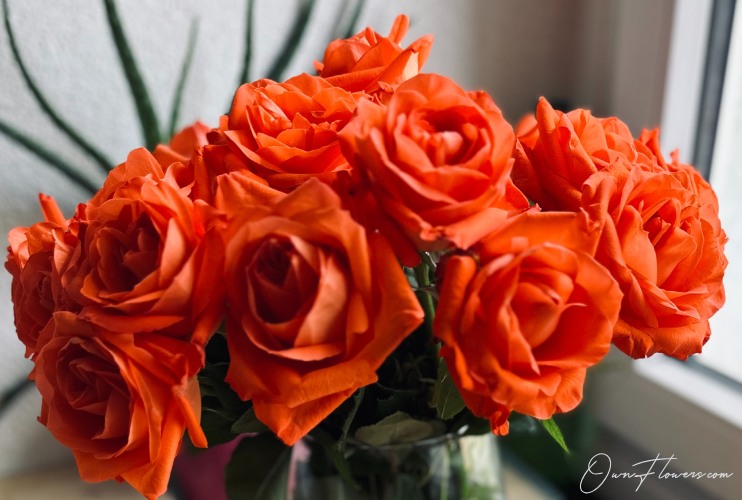
Ownflowers.com
Roses are not only beautiful but also have a rich history and cultural significance. They have been used in art, literature, and religion for centuries, and have been associated with everything from purity and innocence to passion and desire. In some cultures, roses are even used for medicinal purposes and are believed to have healing properties. Whether you are a gardener, a lover of flowers, or simply appreciate the beauty of nature, roses are sure to captivate and inspire.
The History of the Rose:
Roses have been a beloved flower for thousands of years, with their cultivation dating back to at least 5,000 years ago in China. The oldest rose fossils found date back to around 35 million years ago, and they were likely grown by nomadic humans along frequently traveled routes
During the Roman period, roses were extensively grown in the Middle East and used for medicinal purposes, as confetti at celebrations, and as a source of perfume. The Roman nobility even established large public rose gardens in the south of Rome
In Greek mythology, the goddess of flowers, Chloris, breathed life into a woodland nymph who had died, creating a new flower. The rose became a symbol of secrecy due to its association with the need for discretion.
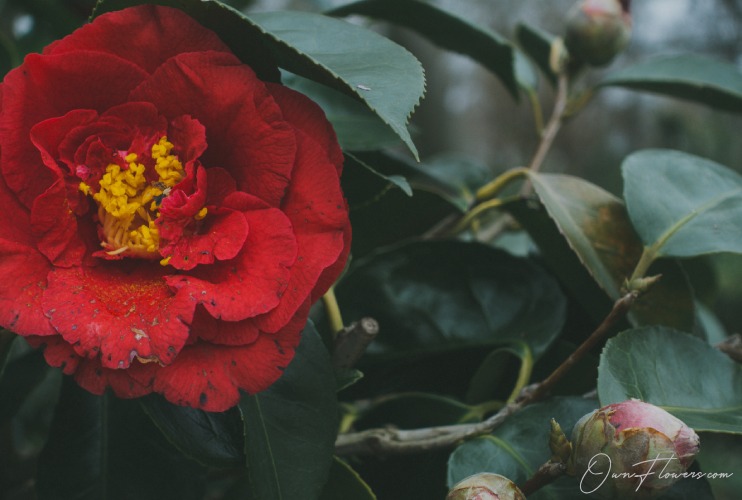
Ownflowers.com
Throughout history, roses have been used as symbols of love, beauty, war, and politics. Literature is filled with references to roses, including Shakespeare’s famous line “A rose by any other name would smell as sweet”.
Researchers have even discovered petrified rose wreaths at ancient tombs in Egypt and remains of rose hips in parts of Europe. Rose frescoes discovered in Crete were reportedly created in 1600 B.C.
Overall, the history of the rose is rich and varied, with its cultivation and symbolism spanning many cultures and periods.
Rose Varieties:
When it comes to rose varieties, there are many to choose from. We’ve compiled a list of the most popular types of roses to help you decide which one is right for your garden.
Hybrid Teas:
Hybrid Tea roses stand as the foremost category among modern roses, renowned for their elegant characteristics. These roses are characterized by their long, slender stems and pointed, sophisticated blooms, making them a favorite among flower enthusiasts and florists alike. The Hybrid Tea roses boast a captivating range of colors, from passionate reds to soft pinks, vibrant yellows, and pure whites, making them versatile choices for various occasions.
One of the most prized qualities of Hybrid Tea roses is their suitability for cutting. Their graceful form and sturdy stems make them ideal candidates for floral arrangements and bouquets. Whether adorning a wedding centerpiece, brightening up a room, or expressing condolences at a funeral, Hybrid Tea roses can convey emotions with their exquisite beauty and fragrant presence.
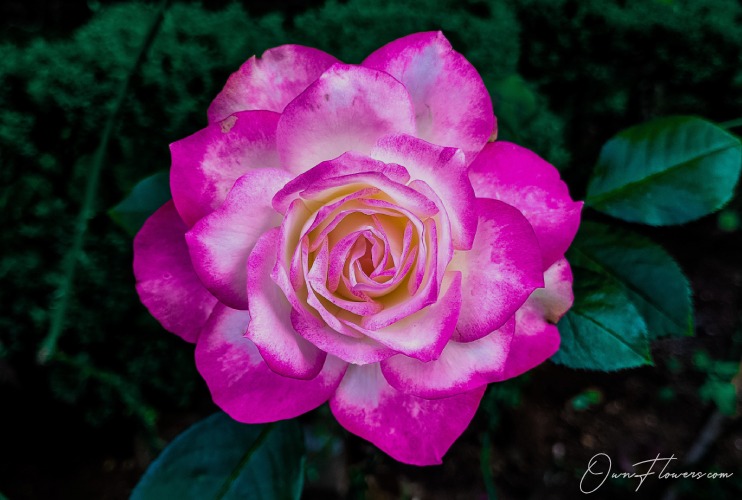
Ownflowers.com
These roses have a rich history and have been meticulously bred to combine the best attributes of both parents. Their enduring popularity is a testament to their ability to capture hearts with their timeless elegance, making them an enduring symbol of love, beauty, and grace in the world of floriculture.
Floribundas:
Floribunda roses, a delightful fusion of Hybrid Tea and Polyantha varieties, present a captivating blend of characteristics that make them an exceptional addition to any garden or landscape. These roses are celebrated for their prolific clusters of blooms that gracefully drape over the entire bush, creating a captivating tapestry of color and fragrance. Their abundant flowering sets them apart, with each bush resembling a vibrant living bouquet.
Incorporating a diverse palette of colors, from the softest pinks to the brightest yellows and cheerful oranges, Floribundas offers a spectrum of choices to suit every taste and garden theme. This extensive range of colors allows gardeners and floral enthusiasts to craft visually stunning displays and arrangements.
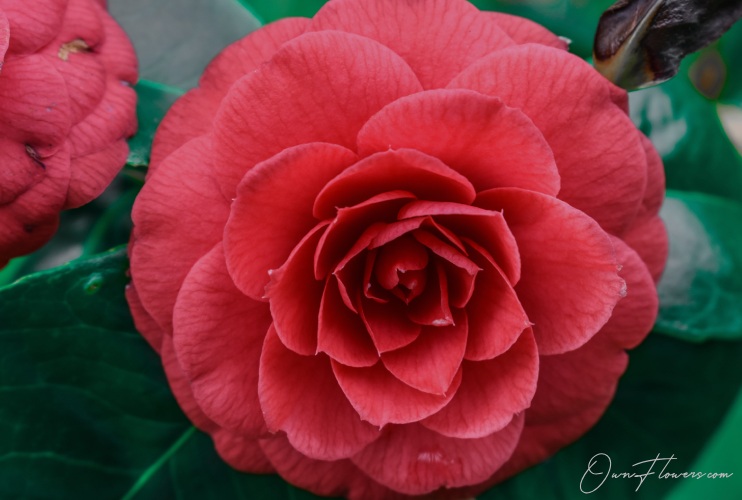
Ownflowers.com
One of the most alluring qualities of Floribunda roses is their ease of care. They are an excellent choice for both novice and experienced gardeners, requiring minimal maintenance while providing maximum beauty. Their robust nature and continuous blooming throughout the season make them a reliable and rewarding choice for any garden or landscape project.
In the world of roses, Floribundas shines as a testament to the artful blending of characteristics from their parent varieties, making them a symbol of versatility, beauty, and accessibility in the world of horticulture.
Grandiflora:
Grandiflora roses represent a harmonious union of the elegance of Hybrid Tea roses and the exuberance of Floribundas, resulting in a distinct and enchanting category within the realm of roses. People celebrate these roses for their strikingly large blooms that gracefully adorn long, slender stems, creating a majestic presence in gardens and floral arrangements alike.
Diversity is a hallmark of Grandiflora roses, as they showcase a stunning array of colors, including passionate reds, soft pinks, and vibrant yellows. Their wide spectrum of hues allows floral enthusiasts and gardeners to infuse gardens and bouquets with a touch of grandeur and sophistication.
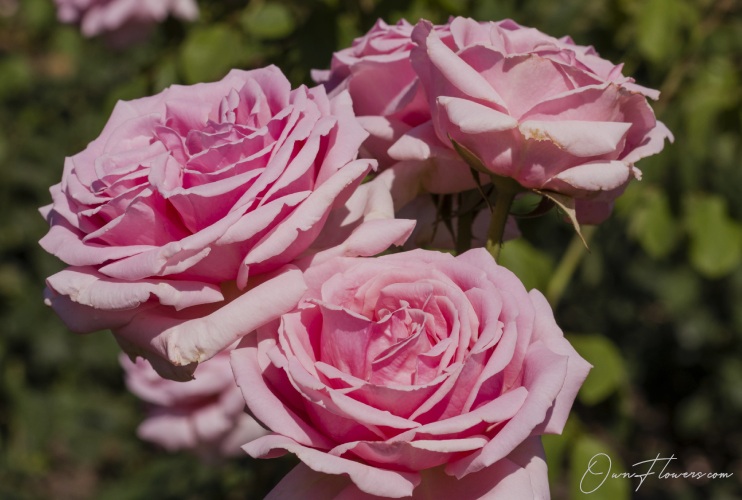
Ownflowers.com
One of the standout features of Grandiflora roses is their suitability for cutting. Their robust, tall stems make them an excellent choice for creating impressive floral arrangements that convey a sense of opulence and grandeur. Whether gracing the centerpiece of a grand event or adorning a vase in a cherished space, Grandiflora roses bring a touch of class and grandeur to any setting.
These roses embody the careful blending of the best traits from their parent varieties, making them a symbol of both elegance and exuberance. With their regal beauty and versatility, Grandiflora roses continue to capture the hearts of flower enthusiasts and decorators, ensuring their place of honor in gardens and floral artistry.
Climbers:
Climbing roses, nature’s enchanting climbers, introduce a captivating dimension to garden landscapes through their ability to ascend and grace vertical structures with their beauty and fragrance. These remarkable roses possess a natural inclination to climb, making them the ideal choice for those seeking to add vertical interest to their outdoor spaces.
One of the defining features of climbing roses is their adaptability to various forms of support, from trellises and walls to arbors and fences. Their flexible canes gracefully entwine around their chosen structures, creating living tapestries of color and scent. Whether framing an entrance, concealing an unsightly wall, or adorning a pergola, climbing roses bring a touch of romance and sophistication to any outdoor setting.
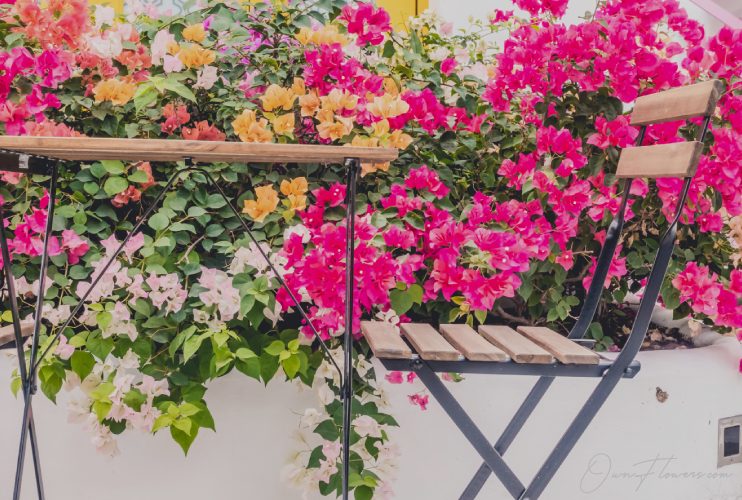
OwnFlowers.com
Climbing roses contribute a kaleidoscope of colors to the garden palette, from romantic pinks to passionate reds and cheerful yellows. Their blossoms, arranged in clusters along the climbing canes, not only provide vibrant splashes of color but also infuse the air with a delightful fragrance that enchants both garden visitors and passersby.
These roses are more than just ornamental; they are storytellers, weaving narratives of grace and elegance into the very fabric of the garden. With their versatility, climbing roses invite gardeners to explore vertical gardening and provide an opportunity to create enchanting outdoor spaces that delight the senses and elevate the aesthetic appeal of any landscape.
Shrub Roses:
Shrub roses, revered for their resilience and resistance to disease, stand as the steadfast pillars of any garden. These remarkable roses are a testament to nature’s ability to combine hardiness with beauty, making them an exceptional choice for both novice and experienced gardeners.
Shrub roses boast a diverse color palette, encompassing the softest hues of pink, passionate shades of red, and the purity of white. Their versatile range of colors ensures that there’s a shrub rose to complement any garden theme or landscape design, adding a vibrant splash of color that transforms outdoor spaces.
One of the defining features of shrub roses is their low-maintenance nature. Their hardiness makes them a reliable choice for gardeners who seek a plant that can thrive with minimal fuss. They are adept at withstanding a variety of weather conditions, making them resilient performers year after year.
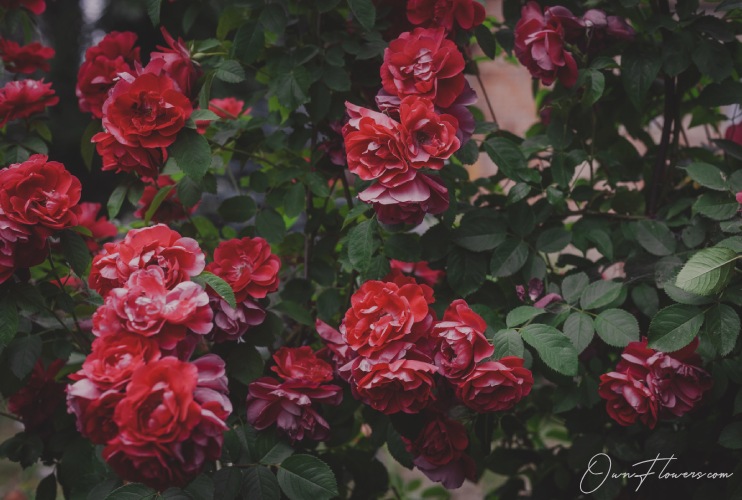
OwnFlowers.com
In addition to their visual appeal, shrub roses offer a sensory treat with their fragrances. From the gentle sweetness that fills the air to the bold and spicy notes that awaken the senses, their scents vary widely, ensuring there’s a shrub rose fragrance to suit every preference.
Shrub roses exemplify the perfect marriage of beauty and resilience, embodying the notion that a garden can be both aesthetically pleasing and effortlessly maintained. Their enduring charm and adaptability make them an essential addition to any garden seeking to embrace nature’s balance of strength and grace.
In conclusion, there are many types of roses to choose from, each with its own unique characteristics. Whether you’re looking for a rose to cut for floral arrangements or one to add color and fragrance to your garden, there’s a rose variety that’s perfect for you.
Cultivation And Care:
Planting:
When embarking on the journey of planting roses, several essential steps ensure a successful and thriving garden addition. First and foremost, select a location basking in full sun exposure and boasting well-draining soil. The soil’s pH level should ideally fall within the range of 6.0 to 6.5, creating the optimal conditions for your roses to flourish.
Begin by excavating a hole twice as wide and deep as the root ball of your rose plant. This provides ample space for the roots to establish themselves and access vital nutrients. To enrich the soil, blend in generous amounts of compost or well-rotted manure, fortifying it with organic matter that will nurture your roses as they grow.
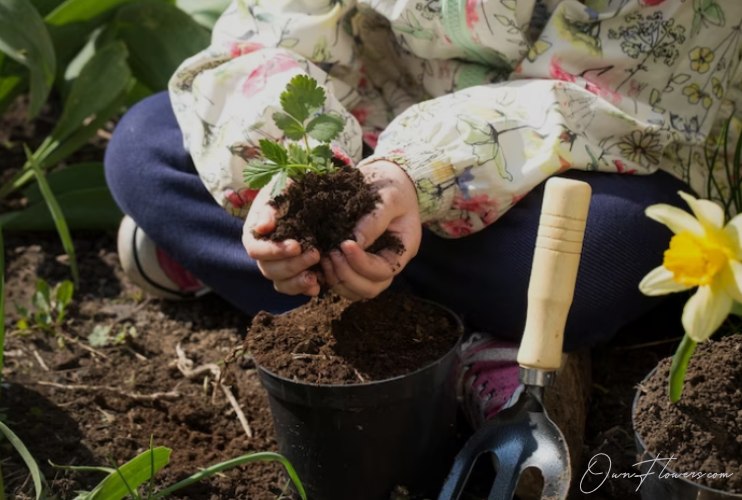
Ownflowers.com
With the groundwork prepared, carefully position the rose plant within the hole, ensuring that the top of the root ball aligns perfectly with the soil surface. This step guarantees proper root placement and encourages vigorous growth. Gently backfill the hole with the amended soil, pressing it down firmly to eliminate air pockets and provide stability.
Finally, cap off the planting process by generously watering your newly positioned rose. This essential step promotes immediate hydration and root establishment, ensuring your roses start their journey toward vibrant bloom with vigor.
Pruning:
Pruning is a crucial cornerstone of nurturing thriving and vibrant roses, playing a pivotal role in their health and blooming potential. To maximize the beauty of your rose bushes, it’s essential to undertake pruning as an integral part of your rose care regimen.
Timing is of the essence when it comes to pruning. Ideally, this should be executed during late winter or early spring, just before the new growth cycle commences. This strategic timing allows for rejuvenation without disrupting the impending burst of fresh shoots.
Begin by meticulously inspecting your rose bushes. With discerning eyes, identify and decisively remove any lifeless, disease-ridden, or compromised wood. This initial step serves as a vital housekeeping measure, eliminating potential sources of stress and disease propagation.
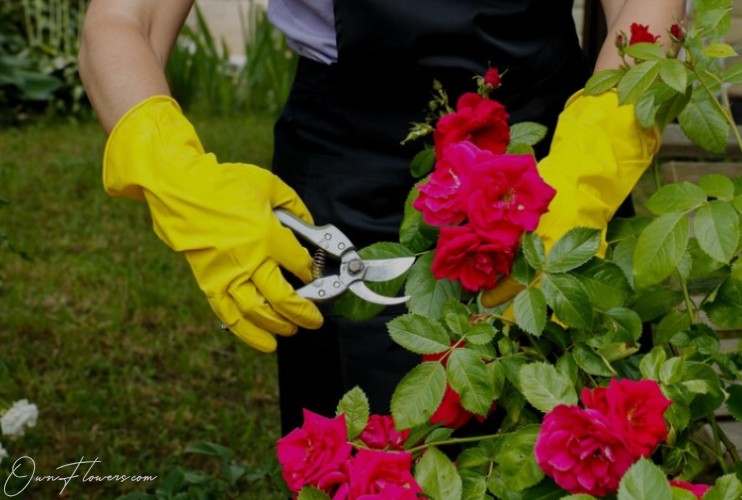
Ownflowers.com
Next, focus on optimizing the structure of your rose bush. Prune with purpose, targeting crossing branches that may inhibit airflow or create congestion within the canopy. By thoughtfully excising these impediments, you create an open and balanced framework that promotes healthy circulation and growth.
Trimming back the remaining canes to about 3-5 buds from the base is the final flourish in your pruning endeavor. This practice encourages the emergence of new, robust shoots, each adorned with the promise of more prolific and exquisite blooms.
Pruning, when executed judiciously, unfolds as a symphony of care, orchestrating the rose’s journey toward optimal health and aesthetic splendor.
Watering:
Regular and thorough watering is essential for the well-being of your roses, particularly when arid conditions prevail. To ensure their vitality, we advocate a weekly deep watering regimen, as opposed to frequent shallow watering. This approach allows moisture to penetrate the soil deeply, reaching the roots where it’s needed most.
Direct your watering efforts toward the base of the plant, taking care to avoid wetting the leaves. Moist leaves can be susceptible to fungal diseases, so aim to keep the foliage dry. This practice safeguards the overall health of your roses and minimizes the risk of disease development.
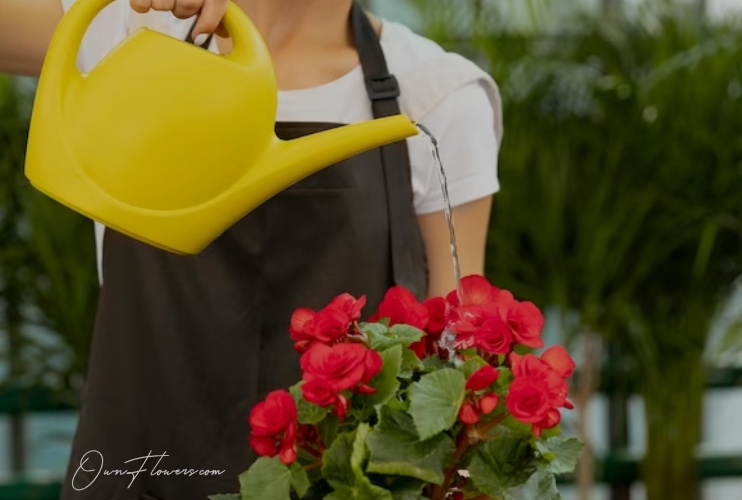
Ownflowers.com
To further enhance moisture retention, consider mulching around the base of your rose plants. Mulch acts as a protective barrier, shielding the soil from excessive evaporation and temperature fluctuations. It not only conserves moisture but also inhibits weed growth, contributing to the overall well-being of your rose garden.
By adhering to these watering guidelines, you’ll foster a thriving rose garden, where the beauty and vigor of your cherished blooms are sustained through diligent care and attention.
Fertilizing:
Fertilizing plays a pivotal role in nurturing robust growth and bounteous blossoms in your cherished rose garden. To cultivate a flourishing haven for your roses, we emphasize a well-timed fertilization schedule that aligns with their unique needs.
Commence your fertilization routine in early spring, prior to the onset of new growth. This strategic timing provides your roses with the essential nutrients required to kickstart the growing season with vitality. The selection of fertilizer is equally crucial; opt for a balanced blend containing equal proportions of nitrogen, phosphorus, and potassium. This harmonious combination encourages overall health, sturdy stems, and vibrant blooms.
As the summer sun reaches its zenith, revisit your fertilization efforts in mid-summer. This secondary application fortifies your roses, sustaining their energy reserves and bolstering their ability to withstand the rigors of the season.
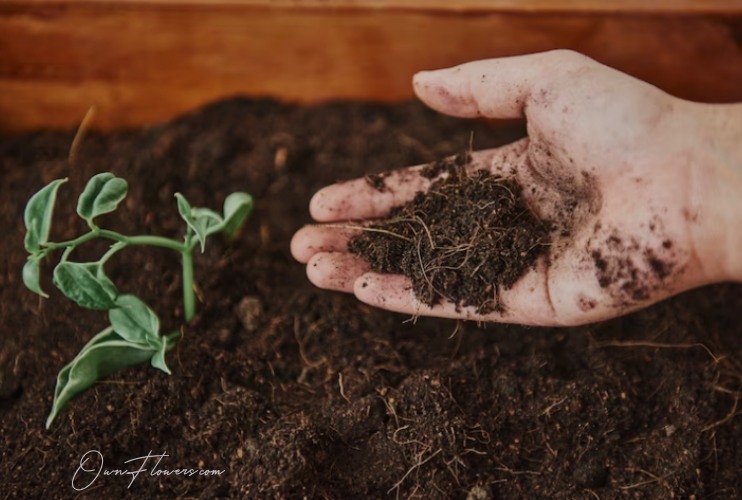
Ownflowers.com
To ensure precision and effectiveness, always adhere to the instructions provided on the fertilizer package regarding the correct quantity and application method. This meticulous approach safeguards against over-fertilization, which can be detrimental to your roses.
By following this meticulously designed fertilization plan, you provide your roses with the nourishment required for a vibrant garden. Consequently, your garden will burst with colors and scents all season long.
By following these simple steps for planting, pruning, watering, and fertilizing, you can enjoy beautiful, healthy roses in your garden.
Symbolism And Meaning of Rose:
People have used roses as symbols in literature, art, and culture for centuries. We will explore the various meanings and symbolism associated with roses.
In Literature:
In the realm of literature, roses have stood as an enduring symbol for centuries, eloquently conveying themes of love, passion, and beauty. Their presence in literary works adds layers of depth and meaning to the narratives.
For instance, in Shakespeare’s timeless masterpiece, “Romeo and Juliet,” the rose takes center stage as a poignant emblem of the profound love shared between the eponymous young lovers. Through lines such as “What’s in a name? That which we call a rose / By any other name would smell as sweet,” Shakespeare encapsulates the idea that love transcends labels and conventions.
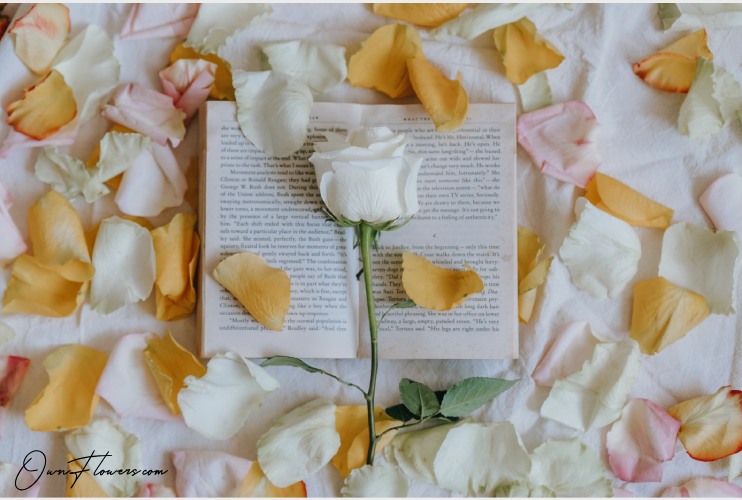
Ownflowers.com
Similarly, in Edmund Waller’s poetic gem, “Go, Lovely Rose!,” the rose assumes a role of enchanting significance. Here, the rose symbolizes not only the beloved’s physical beauty but also the fleeting nature of youth and allure. It reminds us that, like the delicate petals of a rose, we should cherish the ephemeral beauty of life.
These instances underscore the enduring power of the rose as a literary symbol, weaving its fragrance and beauty into the tapestry of human emotions and experiences. In literature, as in life, the rose remains a timeless muse, evoking emotions and imparting wisdom through its timeless symbolism.
In Art:
Throughout the annals of art history, roses have held a cherished place as a recurrent and evocative subject, serving as a canvas for the expression of various themes and emotions.
During the Renaissance, master artists frequently rendered the rose as a symbol of the Virgin Mary, imbuing it with connotations of purity and transcendent beauty. These delicate blooms adorned countless religious paintings, underscoring the profound spiritual significance attributed to the rose.
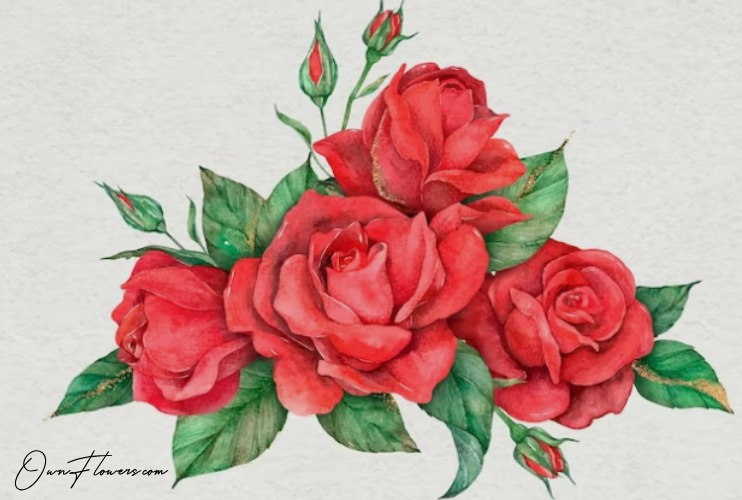
Ownflowers.com
In the realm of modern art, the rose takes on a different mantle, representing love, passion, and sensuality. Artists harness the vivid colors, velvety textures, and alluring contours of the rose to convey the intensity of human emotions. Its presence in contemporary works of art serves as a timeless testament to the enduring power of love and desire.
The rose’s enduring versatility as an artistic motif is mirrored by its ability to evoke emotions and concepts across epochs. Whether in sacred Renaissance works or bold strokes of modern art, it captivates artists and viewers alike. This timeless beauty and symbolism transcend time and culture.
In Culture:
Roses have woven themselves intricately into the cultural tapestry of diverse civilizations. They’ve left an indelible mark on the collective human experience.
In the hallowed annals of ancient Greece, the rose shared an ethereal connection with Aphrodite, the goddess of love and beauty. This association epitomized the bloom’s timeless allure and its ability to embody the very essence of love and physical beauty.
Within Christianity, the rose dons a sacred mantle, frequently linked with the Virgin Mary. Here, it serves as a potent symbol. Intertwined with the rosary, it becomes an emblem of profound devotion and faith. This encapsulates the purity and grace of Mary herself.
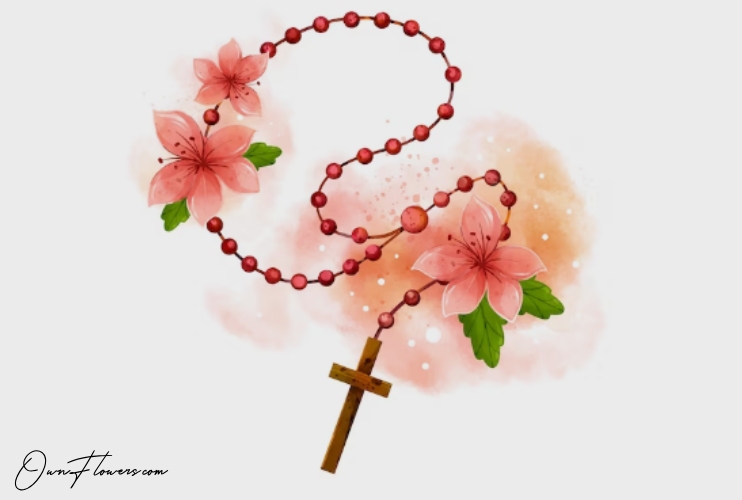
Ownflowers.com
The rose transcends religious and cultural boundaries, becoming a universal emblem of remembrance. Its delicate petals grace memorials worldwide, serving as a poignant reminder of cherished lives and everlasting memories.
Within this rich tapestry of cultural importance, the rose emerges as a symbol. It represents not only beauty and love but also spirituality, devotion, and eternal remembrance. This enduring emblem shapes our collective heritage and traditions.
Uses Of Roses:
Overall, the symbolism and meaning of roses are complex and varied. From literature to art to culture, the rose has played an important role in human history and continues to be a popular symbol today.
In Perfumery:
Within the world of perfumery, roses reign supreme. They are cherished and coveted for their sweet, captivating floral fragrance. The essence of this allure lies in rose oil, also known as rose otto. This prized extraction is derived from the delicate petals of the rose flower. It finds its way into the creation of perfumes, soaps, and cosmetics, infusing these products with sophistication and sensuality.
The process of obtaining rose oil is a labor of love and patience. It takes an astonishing 10,000 pounds of rose petals to yield a mere pound of this precious oil. This extraction method involves carefully plucking the tender petals. Then, subjecting them to a meticulous steam distillation process, we extract their aromatic essence drop by drop.
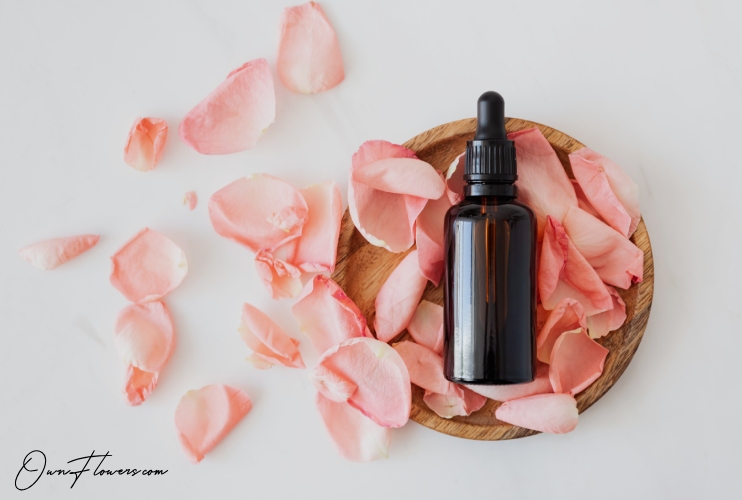
Ownflowers.com
The result of this labor-intensive process is a scent unparalleled in its complexity and depth. The fragrance of rose oil is both enchanting and multifaceted. It has layers of sweet and floral notes, evoking feelings of romance and allure. Its presence in perfumery elevates scents to new heights, adding a touch of timeless elegance and femininity.
As one of the most expensive essential oils in the world, rose oil embodies luxury and exclusivity. Its rarity and the painstaking effort required for its production contribute to its elevated status in the realm of perfumery. A fragrance adorned with the essence of roses is more than a scent; it is a masterpiece, a testament to the enduring allure of the rose and its place as the heart and soul of the world’s most exquisite perfumes.
In Medicine:
For centuries, people have cherished roses for their aesthetic beauty. Additionally, they have harnessed their wealth of therapeutic benefits in the realm of medicine.
Rose water, a gentle tonic derived from steeping rose petals in water, is one of the earliest known rose-based remedies. For ages, people have used its mild antiseptic properties to cleanse and soothe skin irritations. It offers a natural balm for the skin. Furthermore, the delicate and refreshing aroma of rose water has made it a popular choice for aromatherapeutic purposes. It provides a sense of calm and relaxation.
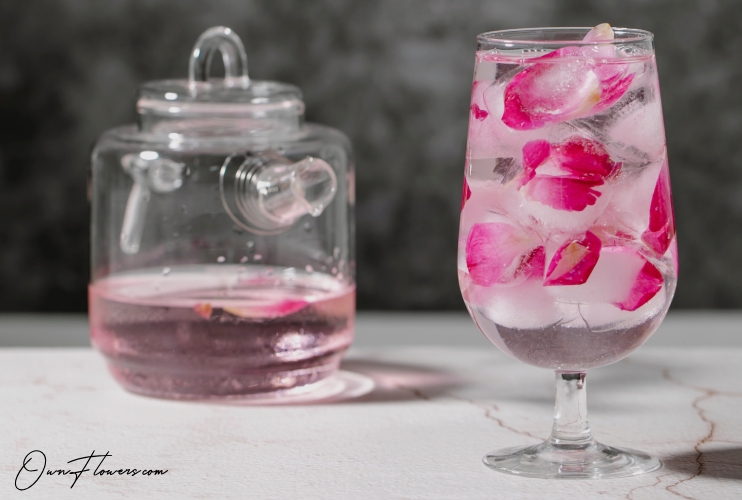
Ownflowers.com
Rose oil, often referred to as rose otto, plays a pivotal role in aromatherapy. It’s a potent stress reliever, known for its soothing scent. This fragrance profoundly affects emotional well-being, reducing tension and fostering tranquility. Its therapeutic potential is evident in holistic therapies and massages.
Beyond the petals, rose hips, the fruit of the rose plant, emerge as a potent source of wellness. People have used them to enhance their immune system and fight colds and flu due to their vitamin C content. Furthermore, their rich vitamin content enhances their effectiveness as a natural immune booster. Consequently, this makes them a valuable addition to herbal remedies.
In the intersection of nature and medicine, roses reveal their versatility. They offer remedies that soothe the body and calm the mind. From skincare elixirs to aromatherapeutic oils and immune-boosting tonics, these floral wonders continue to enhance our well-being. They remind us of the profound healing power that resides in nature’s embrace.
In Culinary:
In the realm of culinary artistry, roses have, for centuries, transcended their ornamental role, becoming cherished ingredients. Across cultures, they’ve delighted palates.
Rose water and rose petals play prominent roles in Middle Eastern and Indian cuisine. They are fragrant and imbued with a subtle floral essence. These culinary stars add delightful flavors and aromas to various dishes. These culinary gems impart a unique flavor and aroma to an array of delectable dishes. In the realm of sweets, classics like rice pudding and baklava are elevated with rich infusions, creating sensory masterpieces. Meanwhile, in the world of beverages, rose petals, in lassi, work their magic. They impart a delicate floral note to this traditional Indian yogurt drink.
Beyond their flavorful contributions, rose petals have another role in the culinary world. They create a soothing infusion, known as rose tea, celebrated for its calming properties. Many believe that this aromatic brew offers relaxation and tranquility. Therefore, it is a cherished choice for those seeking respite from the daily bustle of life.
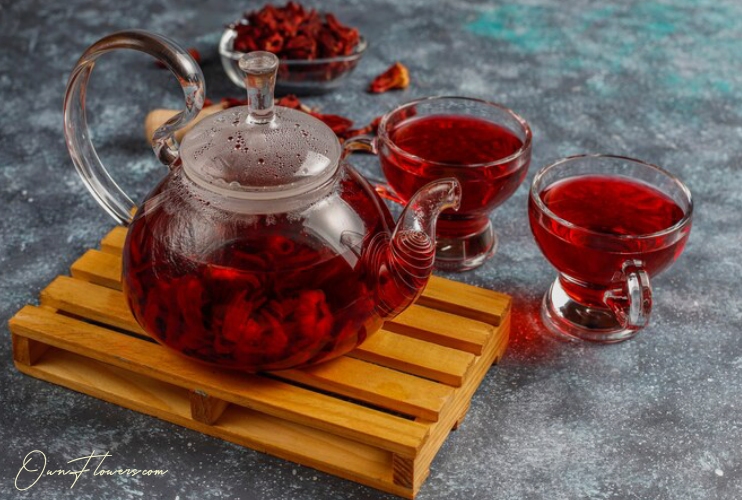
Ownflowers.com
Rose hips, the fruit of the rose plant, bring their own unique culinary charm. They transform them into jams, jellies, and syrups, all brimming with vitamin C and a slightly tart flavor. These rose hip creations not only tantalize the palate but also provide a burst of immune-boosting nutrients. They marry taste and health in a harmonious blend.
Roses in culinary arts showcase their versatility. From desserts to condiments, they flavor cuisines worldwide, creating memorable culinary experiences.
Overall, roses have a wide range of uses in various industries. From perfumery to medicine to culinary, the rose continues to be a valuable and versatile plant.
Conservation and Threats:
Conservation efforts for roses are crucial to ensure their survival and continued cultivation. There are several threats to the rose industry, including diseases, pests, climate change, and habitat loss.
One of the most significant threats to roses is rose rosette disease, caused by the rose rosette virus. This disease is a substantial threat to cultivation and production throughout the United States. Another major fungal disease of field-grown roses throughout the world is black spot disease. Resistance to both diseases is essential in a sustainable cultivar. Geneticists are developing plants that resist both diseases to save the industry
In addition to diseases, pests such as aphids, spider mites, and thrips can cause significant damage to roses. Climate change is also a significant threat to the rose industry. Changes in temperature and precipitation patterns can affect the growth and health of roses. Extreme weather events such as droughts, floods, and storms can also damage rose plants.
Another significant threat to roses is habitat loss. The development of agriculture clearance destroys natural habitats and threatens the plants and animals dependent on them. Habitat loss endangers many species of wild roses, and ongoing efforts aim to protect and conserve them.
Overall, conservation efforts are critical to the survival of roses. By developing disease-resistant cultivars, protecting natural habitats, and addressing the impacts of climate change. We can ensure that roses continue to thrive and bring beauty to our lives.
As roses continue to captivate our senses, from their fragrant petals to their rich symbolism, what role do you envision these timeless blooms playing in the future of our culture and gardens?

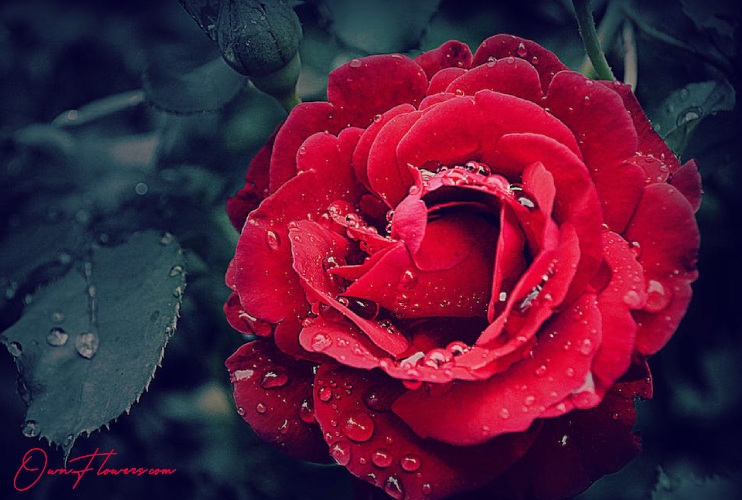
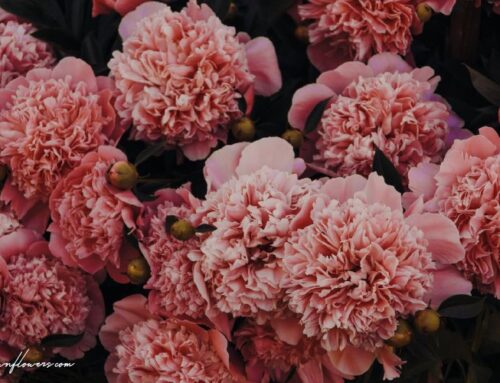
Leave A Comment
You must be logged in to post a comment.